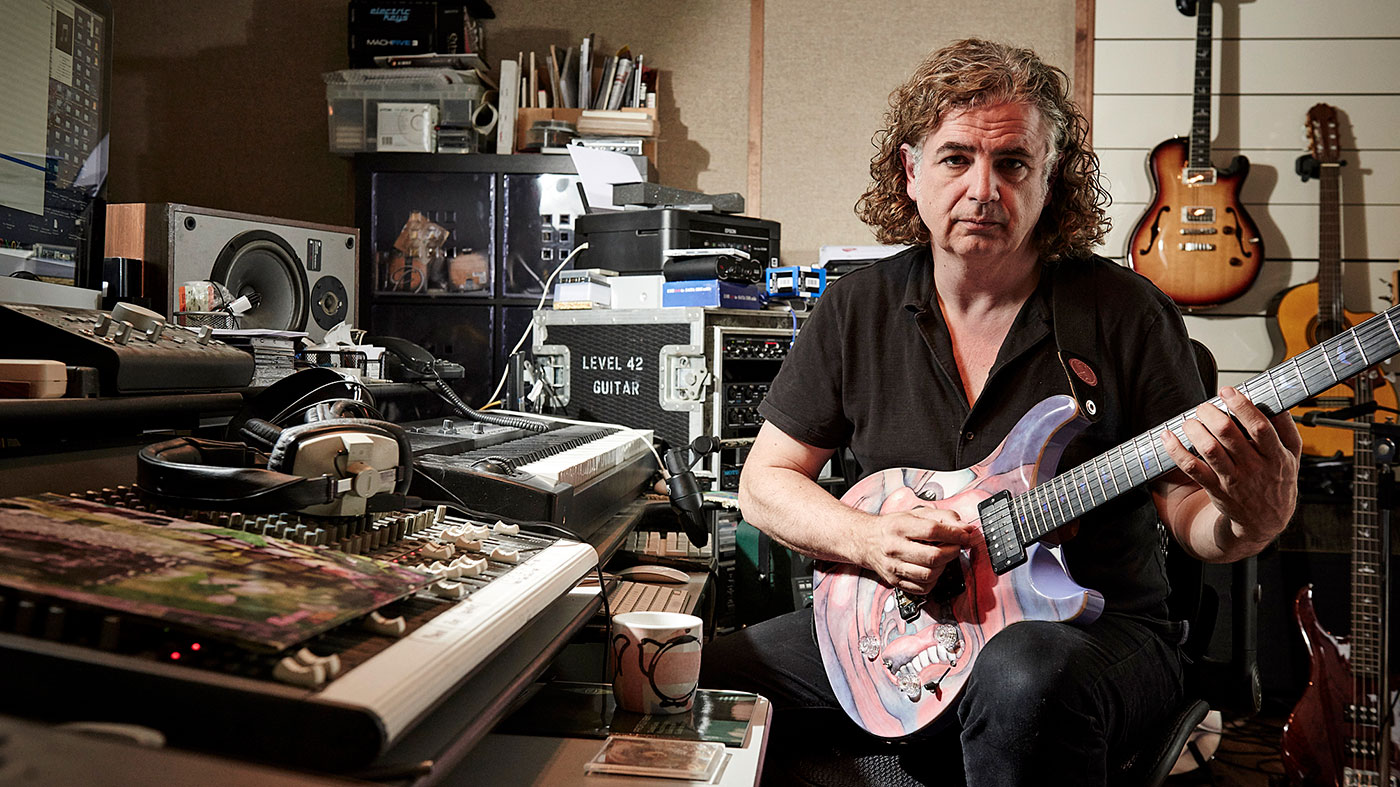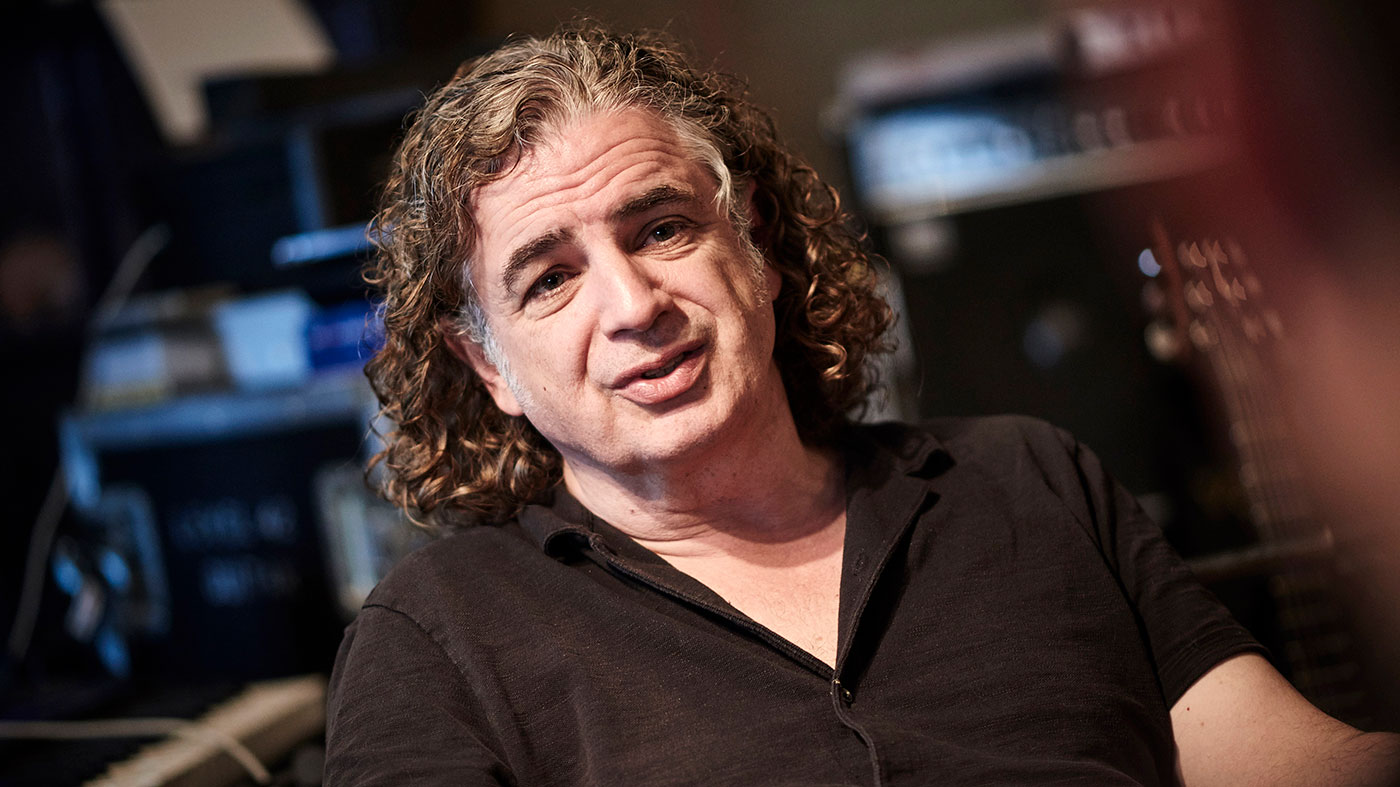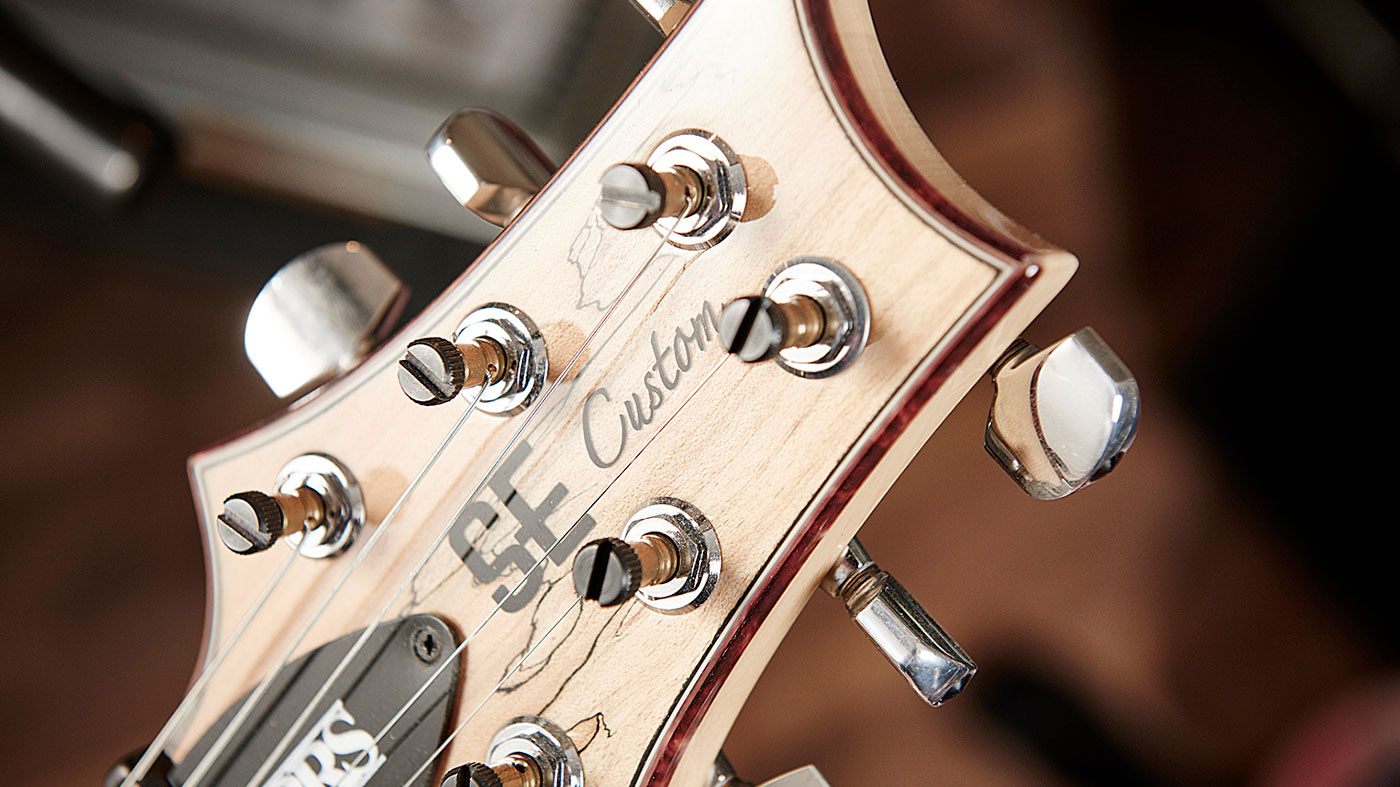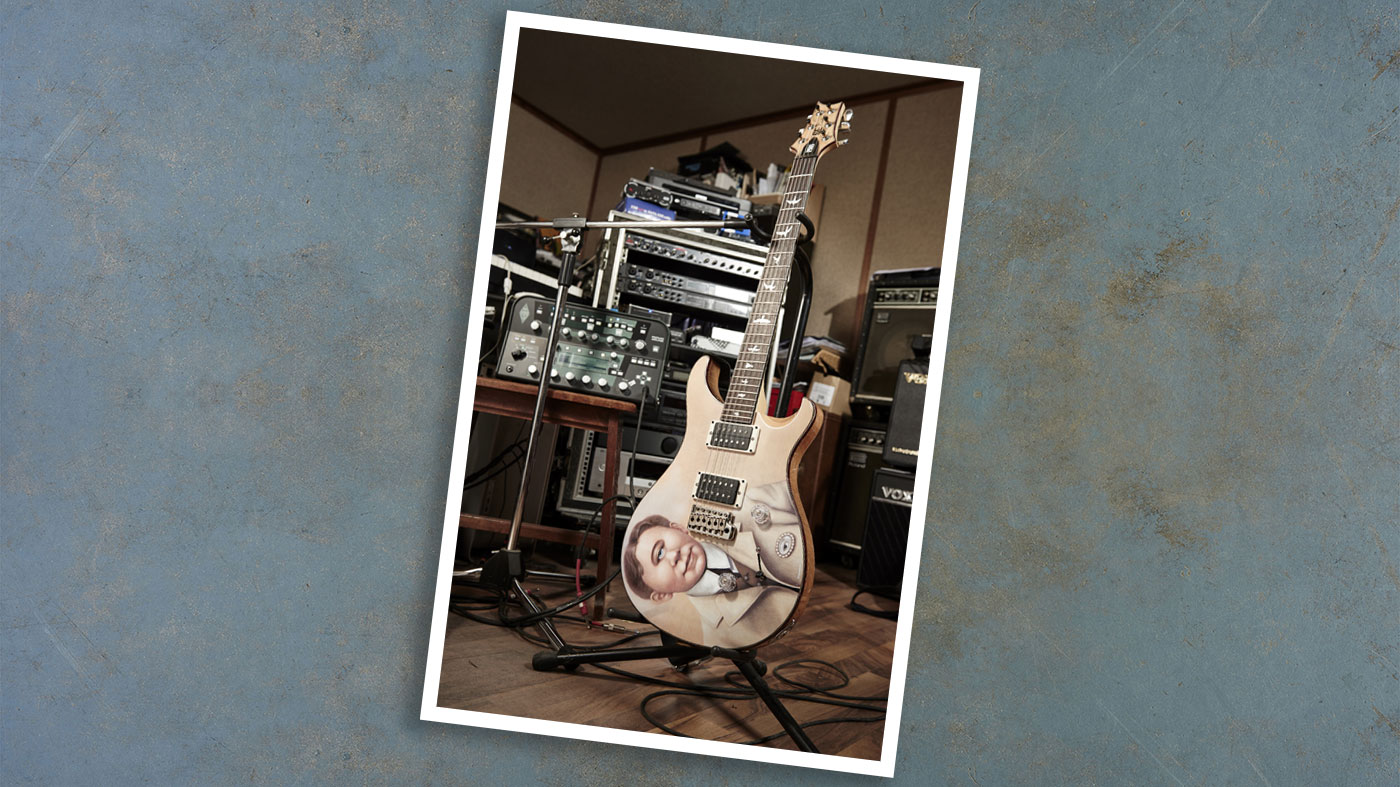Jakko Jakszyk talks King Crimson, Radical Action and Fripp throwdowns
The KC guitarist/vocalist on the pitfalls of New Standard Tuning

Introduction
King Crimson’s 2016 touring band comprises seven band members including no fewer than three drummers - we tracked down singer and guitarist Jakko Jakszyk to his Hertfordshire studio for a mid-tour catch-up.
After seeing King Crimson from the audience in Watford Town Hall back in the 70s, Jakko Jakszyk was sure of the course his musical life was going to take
After seeing King Crimson from the audience in Watford Town Hall back in the 70s, Jakko Jakszyk was sure of the course his musical life was going to take. Years of performing in various prog-related bands led him to working with Robert Fripp in one of Crimson’s offshoot ‘ProjeKcts’. The album A Scarcity Of Miracles resulted, after which Fripp called up Jakko and asked him to join the court of King Crimson as a permanent member.
The newest release from the band, Radical Action To Unseat The Hold Of Monkey Mind, comprises four discs, three of which are live CDs, the fourth a DVD of a complete Crimson performance, lovingly compiled from a whole tour’s worth of footage and multi-track recordings.
“We record every single show we do and on the last tour we filmed every show as well,” Jakko tells us. “Robert’s of the mind - and I do agree with him - that if you select [just one] show on the tour and you get in a big camera crew, you can guarantee it will be one of the worst shows on the tour.
“Just by luck or by the intrusiveness of it, because it’s difficult to be unaware of guys moving around and it kind of screws it up for the audience if you’re sat down the front and there’s a tracking camera going past you. He thought the best thing to do is film it discreetly, so there are little cameras around the stage and, because they’re not visible, we kind of forget about them.”

Snap chat
Fripp is famously against people filming or photographing during his live performances, too…
“As a father of young kids I really, really started to resent the tyranny of filming your kids’ events, because I thought, ‘Wait a minute. I’m actually here at this thing… I can’t really see it because it’s on a tiny screen and the first time I get to see it properly is on the telly with everybody else.’ I thought, ‘I was there. Why didn’t I just look at it when I was there?’
As a father of young kids I really, really started to resent the tyranny of filming your kids’ events... And I have the same thing about gigs
“And I have the same thing about gigs. Why would you want to look at it with shit sound? You’re there, just experience it.”
It must be off-putting from a performer’s perspective, too?
“It does put you off. As Gavin [Harrison, one of Crimson’s three drummers] points out, if you’re about to try something you suddenly think, ‘Wait a minute, some guy’s videoing this, it’s going to be on YouTube later.’ It stops you. You think, ‘Actually, I’ll play something safe, because I don’t want to make a mistake and have it go up there and have people say, ‘He’s fucking useless… Look at this!’’ It does inhibit you.”
Taking the ‘discreet camera’ route proved effective in capturing a realistic picture of the current Crimson line-up, then?
“Yes, the final product is about two-and-a-half hours long, because we’ve got a version of every single thing we played. It’s largely from one show in Takamatsu in Japan, but there are three or four songs from a separate night in Tokyo, one song from a night in Osaka, and then I think there are two songs from a show in Canada and one song from one of the nights in Paris.”

One more red nightmare
How do you split guitar roles between yourself and Robert?
“Sometimes, who plays what is dictated on a pragmatic level in that in the early to mid-80s Robert changed how he tuned his guitar and he uses what he calls ‘New Standard Tuning’ [CGDAEG, bass to treble]. What that means is that we’re addressing a lot of old material that Crimson hasn’t played in decades - and in some cases, ever - so if there are patterns calling for a three- to four-fret stretch, translated to New Standard Tuning, suddenly it’s all over the place.
There are those moments where you think, ‘Why did I say I could do this job? I can’t play that, it’s impossible!’
“So, it’s physically very difficult for him to do it, and early on, before the first tour started, we sat in the studio and he said, ‘I was thinking we might do Larks’ Tongues In Aspic Part 1,’ and, of course, as a fanboy I got quite excited about it and then he said, ‘The trouble is this is very difficult to play in New Standard Tuning, but you play in normal standard tuning, so you can play it.’ And I went, ‘Whaaaat?’ [Jakko laughs and demonstrates one of Fripp’s frenetic guitar lines from Larks’ Tongues…]
“It was one of those moments where you think, ‘Why did I say I could do this job? I can’t play that, it’s impossible!’ It’s been a real challenge and a stretch, so there’s a lot of stuff I play just because it’s easier for me to play than for Robert to play in his tuning.
“Then, of course, there are overdubs on the album that suddenly we have access to. When we do Sailor’s Tale, for instance, I’m able to play the other guitar part, which is fantastic. So, that’s kind of what it’s dictated by - and then the newer pieces we’ve created together or he’s got me to play a part and then he sits there and works out variations over the top.”
King Crimson’s music is notoriously demanding. How did you cope with some of the more complex material?
“You want to get to a point where you don’t have to think about it too much. When we were rehearsing Larks’ Tongues… Part 1, I didn’t know if I’d played it right until we all landed on the same downbeat. Another reason why it’s a difficult thing to play is because you’re in King Crimson and the bloke sitting next to you is Robert Fripp!
“At the first rehearsals we did I was pretty scared and he took me aside and said, ‘Tomorrow, Jakko, can you listen to what Tony [Levin, bass] and I are doing a bit more closely?’ and I said, ‘Oh God, am I not locking in?’ He said, ‘No, we’re making infinitely more mistakes than you are…,’ which was a lovely thing to say.”

Profiled
As a long time fan of the band, it must be amazing to play tracks that have been personal favourites for years…
“Brilliant, yeah, fantastic. It’s an amazing thing to be able to do. We play One More Red Nightmare from Red, which has never been played live. We’re doing a few things from Lizard, which is an album they very rarely touched back then, although I think the ’71 line-up would have played a few things.”
I’ve got a few PRS guitars. I’ve got one that is an exact replica of the one with the In The Court Of The Crimson King cover on it
You’re a long-time PRS player and you’ve had another model on stage with you on the current tour, adorned with the ‘Cyclops’ cover art of the new live album…
“I’ve got a few PRS guitars. I’ve got one that is an exact replica of the one with the In The Court Of The Crimson King cover on it and there’s the Cyclops, which is slightly simpler in that it’s an SE, but it’s the same scale length. Same basic pickup configuration, but it doesn’t have the piezo in the bridge.”
One thing that’s changed recently in the Crimson backline is that Fripp, Tony Levin and Jakko have all gone over to using digital amp modellers. Why the switch?
“This began purely as a pragmatic consideration, because we’re on risers at the back and there are three drummers at the front, so I can’t have a 100-watt cab blaring out - the first thing it’s going to hit is three lots of overhead mics, so we’re all buggered! At rehearsal, Tony was using a Kemper - I think he’s modelled all of his Ampegs - and he was using one for the bass and one for the Stick. It all looked really interesting, so I got hold of one and it sounded pretty damned authentic to me.”
How did you go about sampling all your gear for the Kemper?
“I spent a day in a studio where I lined up various amps and combinations that I have and got them sounding how I like them. I don’t know how it all works technically, but you plug one end into the Kemper and hit the button and it makes a Dr Who-type noise… Then there’s a moment where you’re A/B-ing between the Kemper version of what you have and I thought, ‘This is really hard to tell the difference.’ I mean, it’s amazing.
“For the ‘Robert Fripp sound’, I’m using a profiled Hiwatt through a 4x12 with a fuzz box, which is what Robert used. I wanted something simple - I didn’t want a big pedalboard, I just wanted one controller, because I need to keep my wits about me as I’m playing and singing and the fact that we keep changing the set, I don’t need to be dancing around and doing other stuff. It enables me to stamp on a button and change the rig completely and authentically replicate the kind of tonal area from the different eras of Crimson.”

Curveballs
What was the most difficult one, would you say, to actually replicate from the various manifestations of the band?
The acoustic thing is always a compromise, but at least with the piezo in the PRS, you get an element of that
“Well, I guess the acoustic thing is always a compromise, but at least with the piezo in the PRS, you get an element of that - you certainly get the attack. I can blend it in with a bit of a warmer, cleaner, electric sound, but you get that transient… that kind of top-end thing. I’m having to do a lot of that because of the tuning - all of that is in standard tuning, things like In The Court Of The Crimson King and Epitaph.”
Apart from the tuning situation, has Robert managed to throw any other curveballs for the tour?
“Last year, when we were in Canada, Robert said, ‘I think it would be marvellous if we did Peace. Do you know Peace?’ I said, ‘Yes, of course. It’s on the second album…’ and he said, ‘Well, let’s have a look at it at soundcheck.’ We did and he said, ‘Hmm, let me think about it.’ Then he called me the next day and said, ‘Do you know, I think it sounds better if it’s just voice and guitar,’ and I said, ‘Okay, are you going to play the guitar part?’ and he said, ‘No, I can’t possibly play that in the new tuning.’
“So, I said, ‘That’s just me, then?’ ’King hell, you know? We hadn’t rehearsed. You walk on stage - 2,500 people, all the band members, and it’s just me. Then, when we got to Japan he said, ‘Wouldn’t it be marvellous if you sang the first verse in Japanese?’”
Radical Action To Unseat The Hold Of Monkey Mind is available to buy now via Panegyric.

